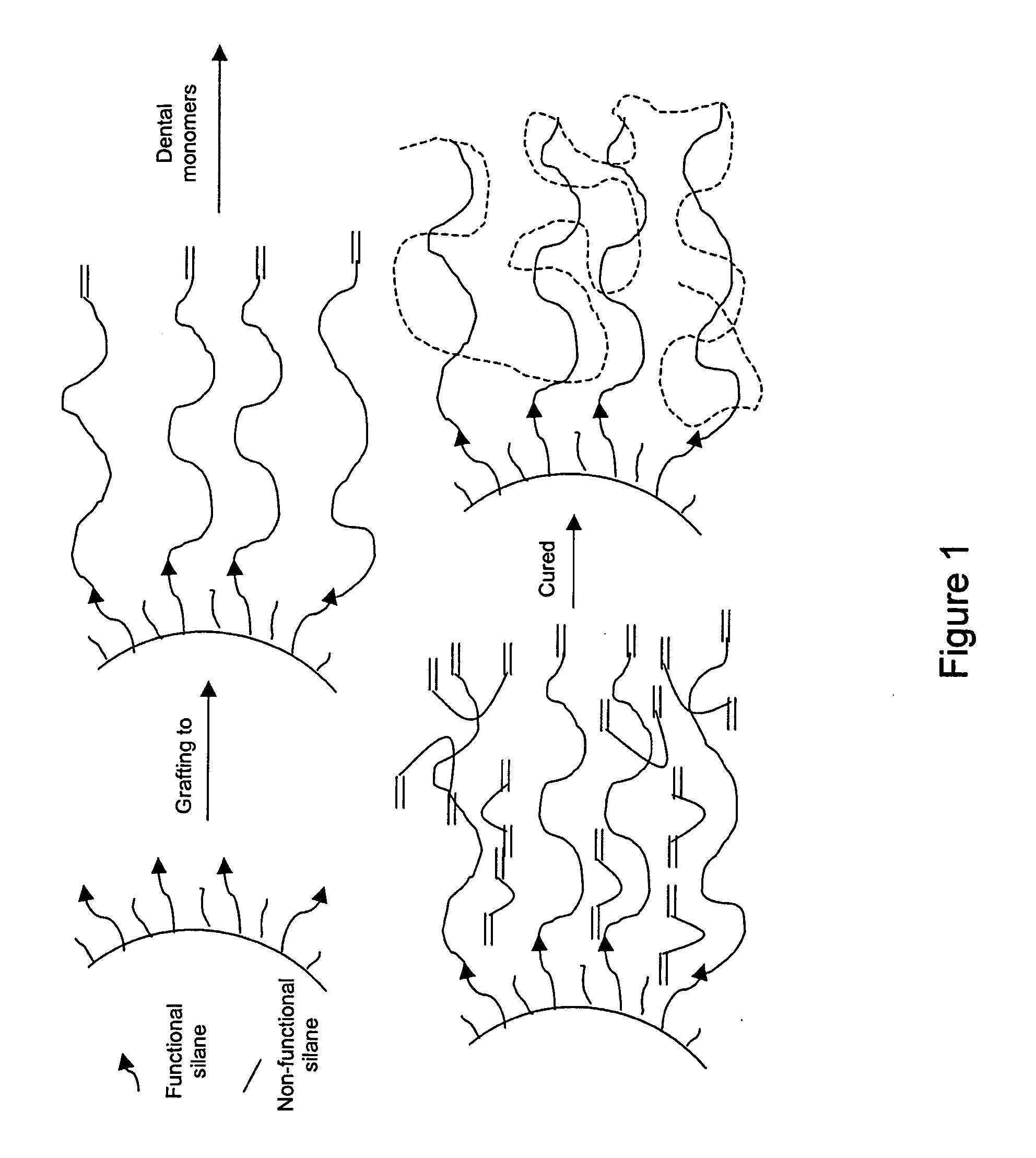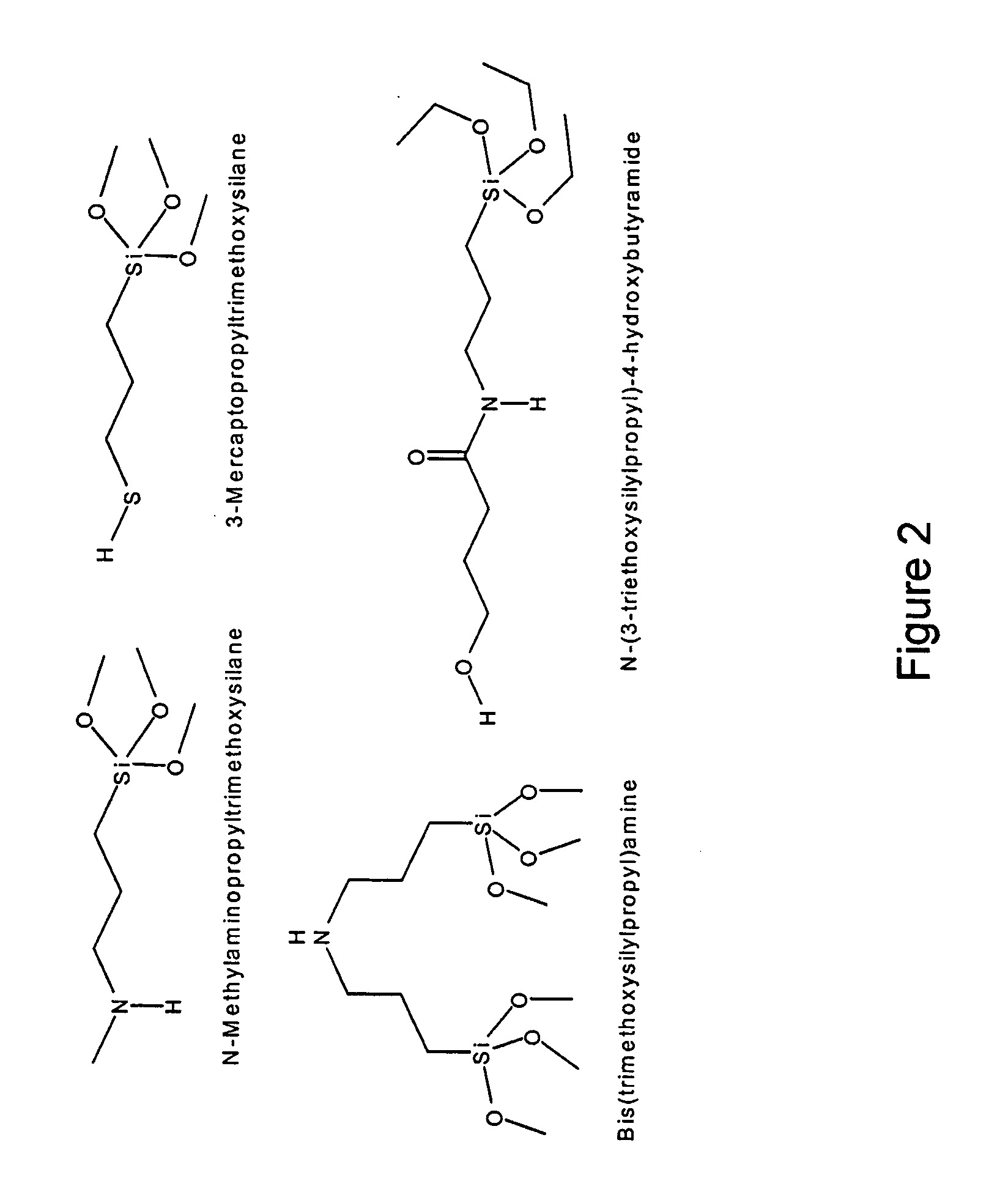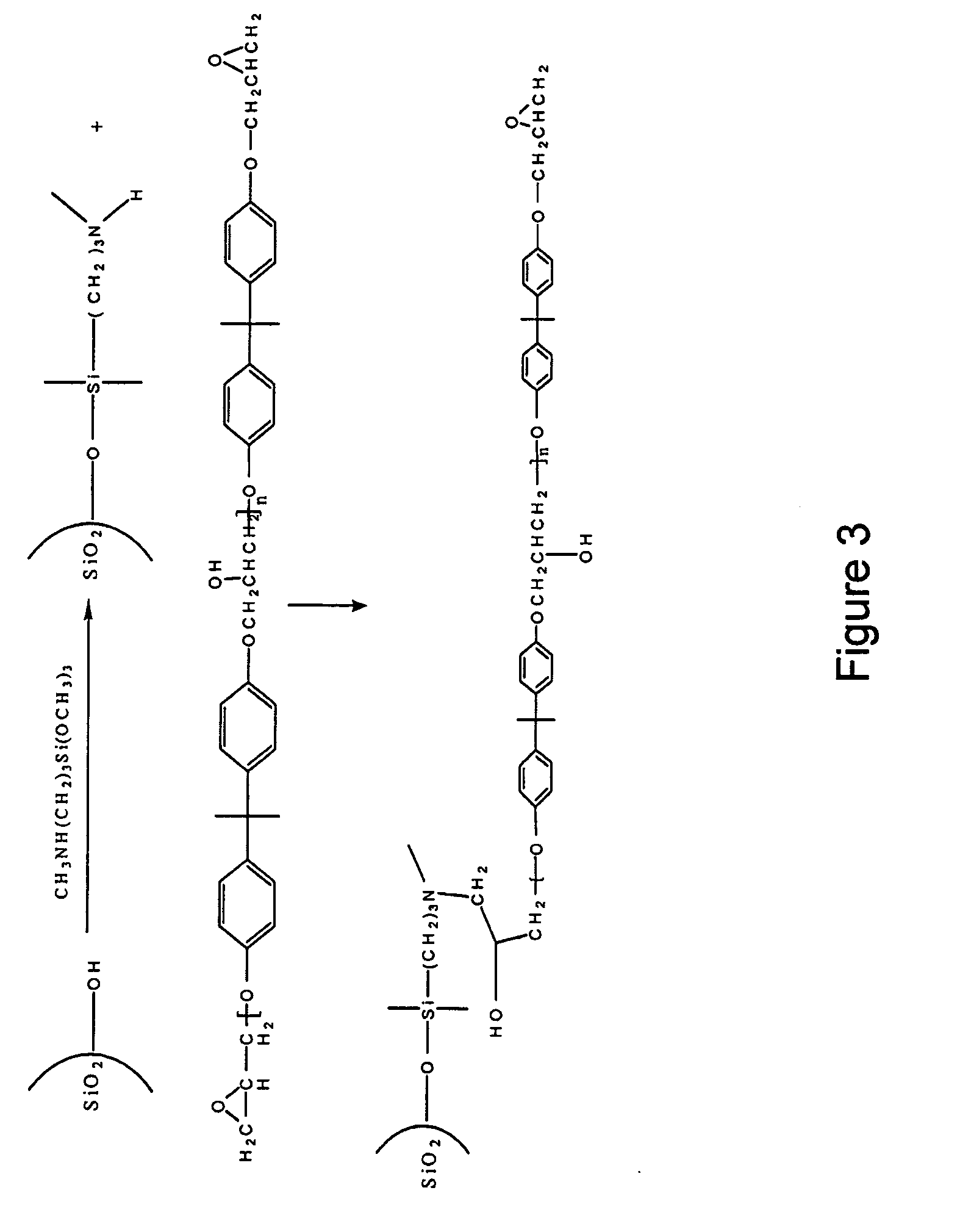Polymer-brush modified fillers for composites
a technology of composite fillers and polymer brushes, which is applied in the field of polymerbrush modified fillers, can solve the problems of reducing the number of covalent bonds, lowering the mechanical properties and hydrolytic stability of dental composites,
- Summary
- Abstract
- Description
- Claims
- Application Information
AI Technical Summary
Problems solved by technology
Method used
Image
Examples
example 15
[0111] This example is similar to example 9. In this process, 2.0 g epoxy with molecular weight of 6100 was used.
[0112] Example 16. 75 ml dried tetrahydrofuran and 10.0 g example 10 modified OX-50 were added to a 100 ml flask. 2.0 g isocyanatoethyl methacrylate was dropped during 30 minutes at room temperature. Then two drops of dibutyltin dilaurate catalyst was added and the reaction mixture was kept at room temperature for 12 hours. Then the mixture was filtered. The solid was washed by acetone for three times and dried under vacuum.
[0113] Example 17. 75 ml ethyl alcohol and 3.0 g bisphenol A ethyoxylate (1EO / phenol) diacrylate (Aldrich) were added to a 100 ml flask. After dissolved at room temperature under stirring, 10 g N-methylaminopropyltrimethoxysilane modified OX-50 (as described in example 1) was added, and the reaction mixture was kept at room temperature for one week. Then the mixture was filtered. The solid was washed by acetone for three times and dried under vacuum....
example 18
[0114] This example is similar to example 17. In this process, 3.0 g urethane acryalte CN 2900 (Sartomer) was used instead of 3.0 g bisphenol A ethyoxylate (1EO / phenol) diacrylate.
example 19
[0115] This example is similar to example 17. In this process, 3.0 g urethane acryalte CN 929 (Sartomer) was used instead of 3.0 g bisphenol A ethyoxylate (1EO / phenol) diacrylate.
[0116] Example 20. 75 ml dried tetradrofuran and 10.0 g N-(3-triethoxysilylpropyl)-4-hydroxybutyramide modified OX-50 (as described in example 5) were added to a 100 ml flask. 2.0 g isocyanatoethyl methacrylate was dropped during 30 minutes at room temperature. Then two drops of dibutyltin dilaurate catalyst was added and the reaction mixture was kept at room temperature for 12 hours. Then the mixture was filtered. The solid was washed by acetone for three times and dried under vacuum.
[0117] Example 21. This example is similar to example 18. In this process, 10.0 g N-methylaminopropyltrimethoxysilane modified E-3000 Glass (with 0.7 μm average diameter) (as described in example 6) was used instead of 10.0 g N-methylaminopropyltrimethoxysilane modified OX-50 (with 0.04 μm average diameter).
[0118] Example 2...
PUM
| Property | Measurement | Unit |
|---|---|---|
| temperature | aaaaa | aaaaa |
| temperature | aaaaa | aaaaa |
| size | aaaaa | aaaaa |
Abstract
Description
Claims
Application Information
 Login to View More
Login to View More - R&D
- Intellectual Property
- Life Sciences
- Materials
- Tech Scout
- Unparalleled Data Quality
- Higher Quality Content
- 60% Fewer Hallucinations
Browse by: Latest US Patents, China's latest patents, Technical Efficacy Thesaurus, Application Domain, Technology Topic, Popular Technical Reports.
© 2025 PatSnap. All rights reserved.Legal|Privacy policy|Modern Slavery Act Transparency Statement|Sitemap|About US| Contact US: help@patsnap.com



